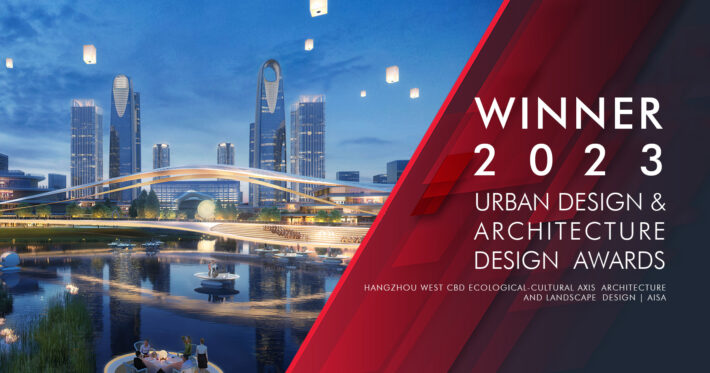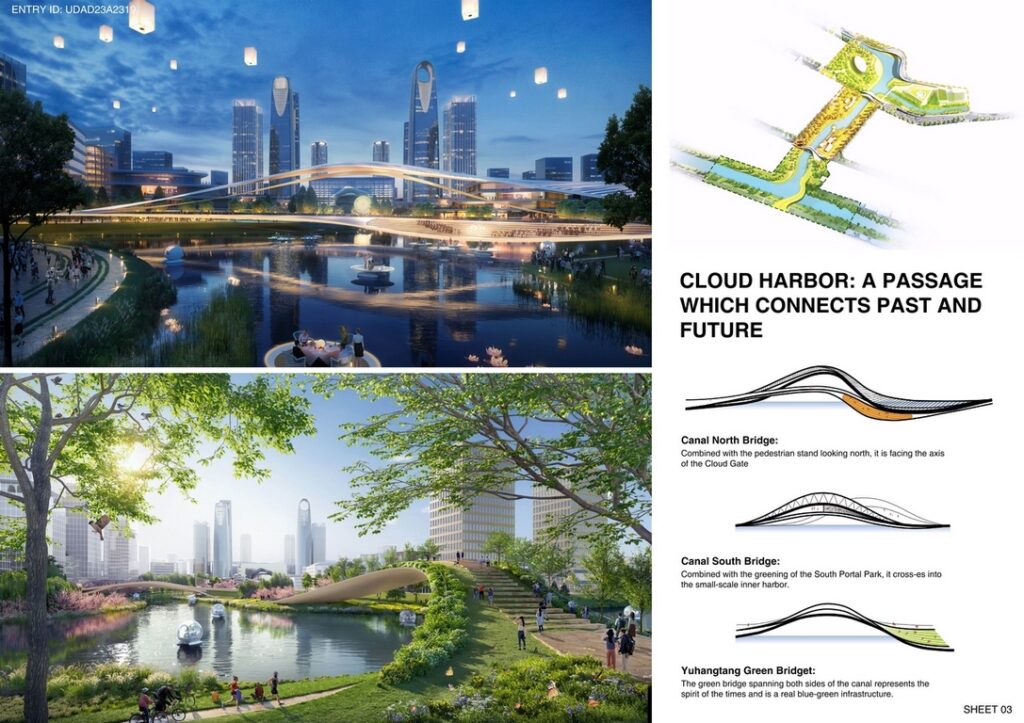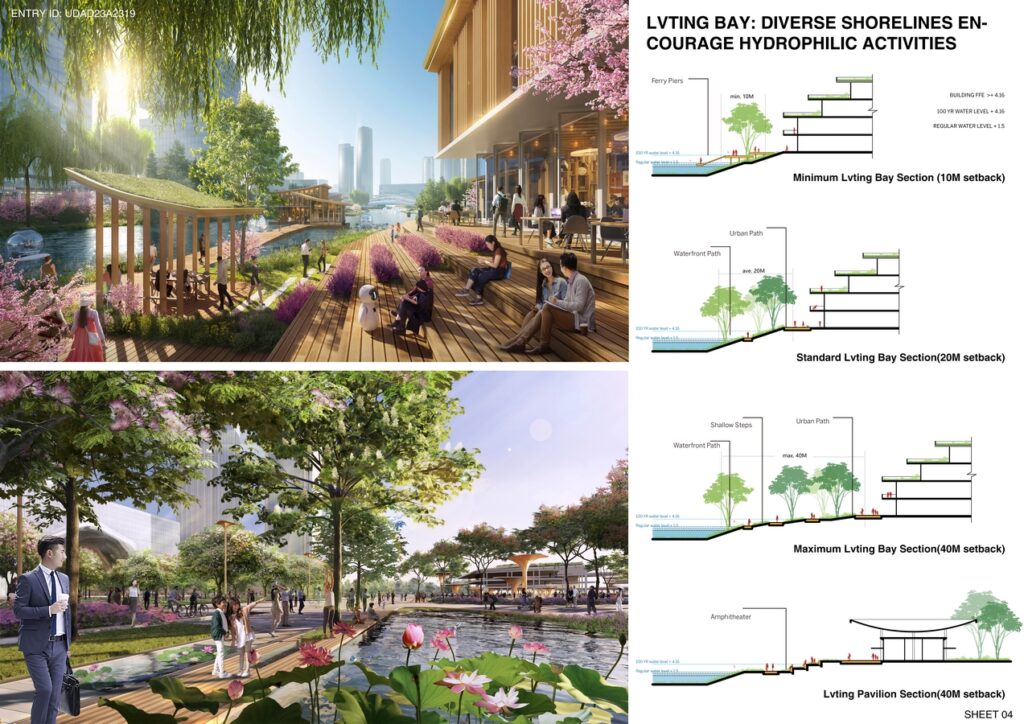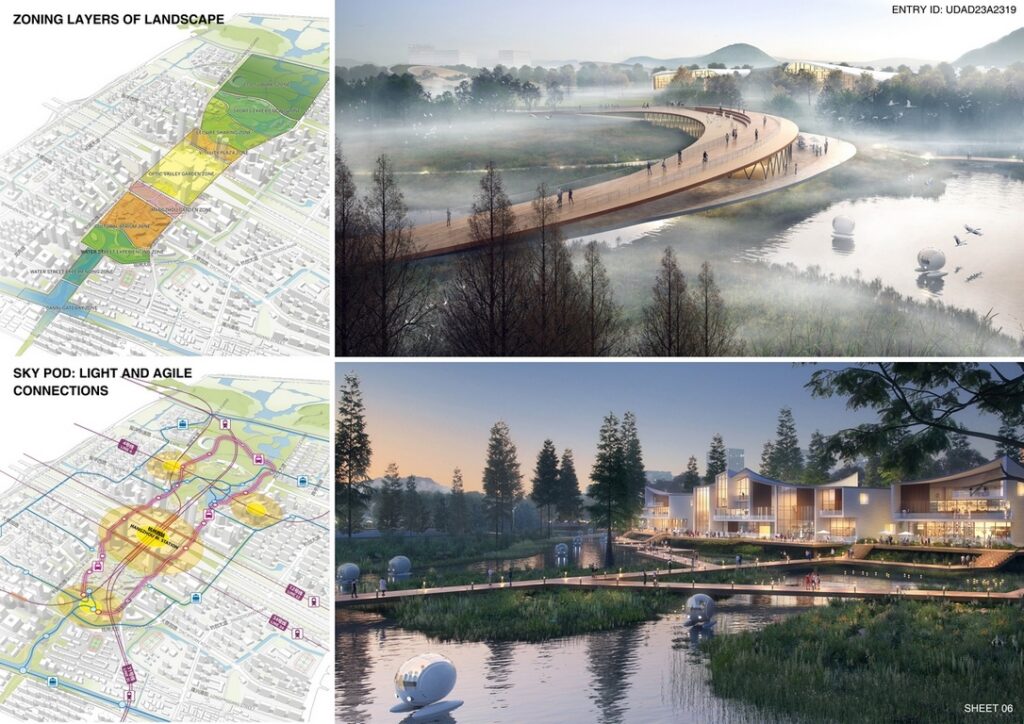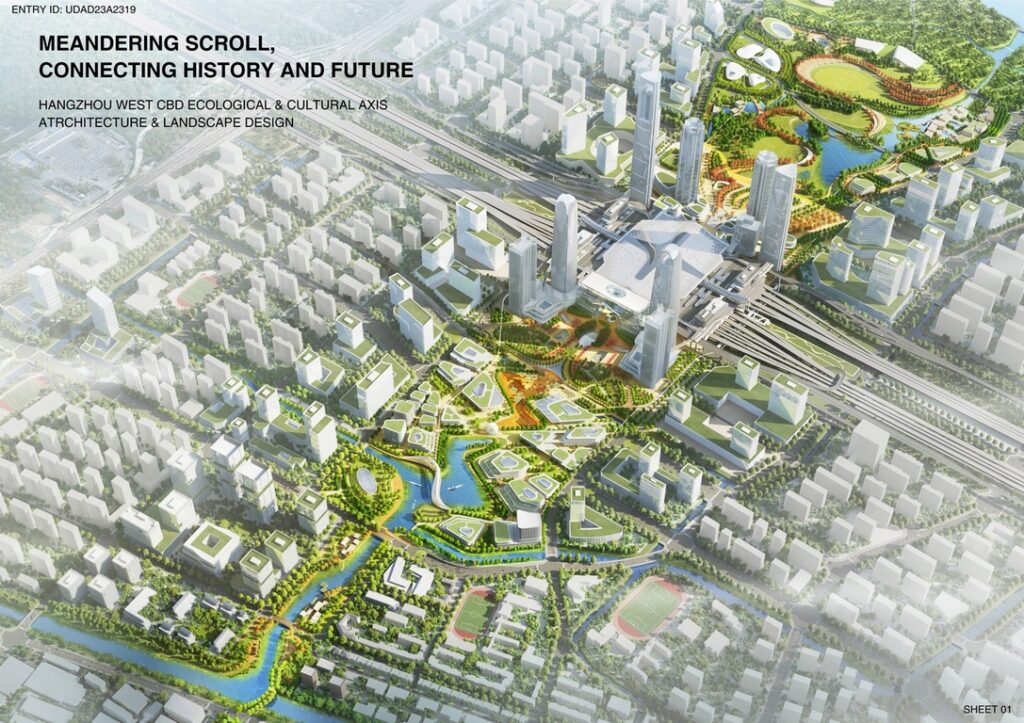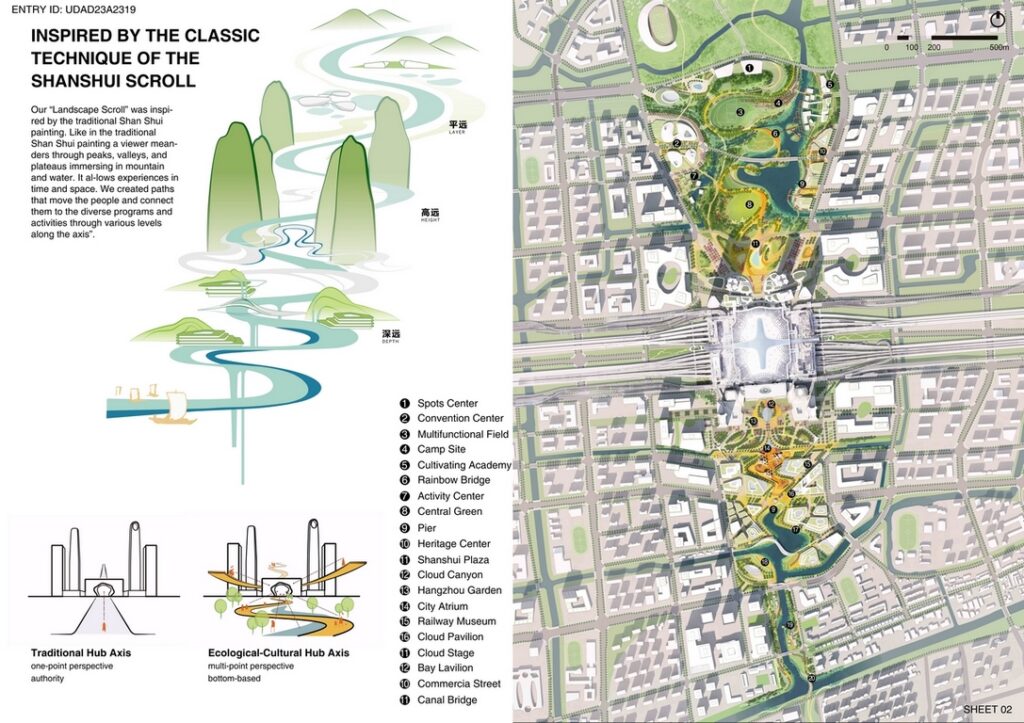Hangzhou West Railway Station Hub, which has just been put into operation, is one of the most important gateway nodes in the Yangtze River Delta. Around the hub, new urban centers are emerging. From the beginning of the project, we hoped that the high-speed floating population brought by the Hangzhou West Railway Station hub and the high-density urban development around the hub would be integrated into the rich cultural and natural environmental base. In many cases, the high-speed railway hub would become a strong and impenetrable axis, and the railway and station physically cut the space on both sides. This large-scale infrastructure often ignores the scale of “people”, meanwhile bringing a negative impact on the surrounding ecosystem services. What we imagine in Hangzhou is a new paradigm of TOD development in the future. In such a high-density hub area, people can still embrace nature, culture, history, and future technology while roaming in the mountains and waters at any time. ASIA’s in-depth understanding of the healthy ecosystem and local culture will help achieve this goal.
Urban Design & Architecture Design Awards 2024: Entries Open!
Take your work to the next level. Register Now…
Gold 🏆 Winner
Urban Design & Architecture Design Awards 2023
Hangzhou west cbd ecological-cultural axis architecture and landscape design
Public Landscape Design (Concept)
Firm
AISA
Architect/Designer
Yihao Wu
Design Team
Yihao Wu, Yinyin Zhou, Rui Liu
Location
Hangzhou
Country
China
Photographer/Copyright
©AISA/Urban Gene/SCAD
Different from the direct and single central axis of the conventional high-speed railway station, which lacks interaction with the city. We will shape a future landscape – “time and space scroll”, which is closely integrated with the city to become a multi-level three-dimensional garden-like experience from multiple perspectives. The concept is inspired by the “far-reaching”, “lofty” and “plain” in Chinese landscape painting techniques, forming a series of spatial and temporal levels of multi-dimensional landscape spaces, such as the southern urban canyon, the central cloud garden, and the northern cloud landscape. Cruise ships, driverless cars, and new light cloud rails will also be connected with the high-speed railway station and subway station in different ways.
In the original planning, the underground ring road is close to the station south complex, and it is on the same high floor as the subway station lobby, interrupting pedestrian movement. Thus, we move the ring road to the southern side in our scheme, to create a continuous multi-story exhibition and leisure space, mainly for walking. The slow traffic system closely connects the high-speed railway with the subway and the stations. The hall floor, the ground garden floor, and the 6M mezzanine of the subway stations will also be important urban spaces, connecting the commercial vitality and cultural corridors of the north-south complex. By virtue of greening, lighting, and the activation of moving lines, we will change the 6-meter space above the ground into a more dynamic urban corridor space, just like a garden in the cloud.
As to the northern region, we disperse the development plot to small patches, completely retain the sight of the two mountains on the axis, and closely integrate the urban development on both sides. Looking north from the hub waiting hall, facing two mountains, the footpath connects shallow hills and water bodies. On the multi-functional lawn, various annual events in the Yangtze River Delta will never end.
Based on the gene of the site, the planning framework combines the concept of zero carbon, human ecosystem, and people-oriented approach. The CBD ecological cultural axis in the west of Hangzhou will become a link of environment, culture, and technology. It will become a new paradigm for the global future hub region.


